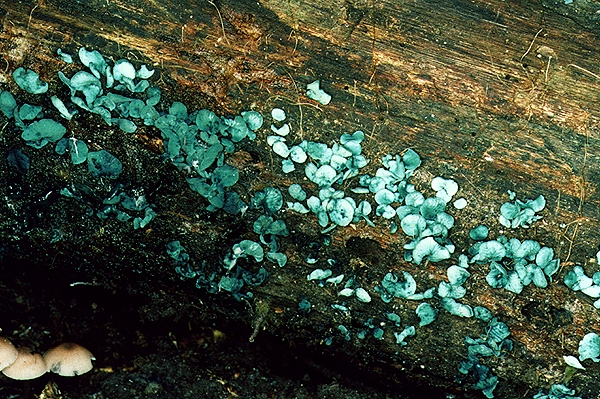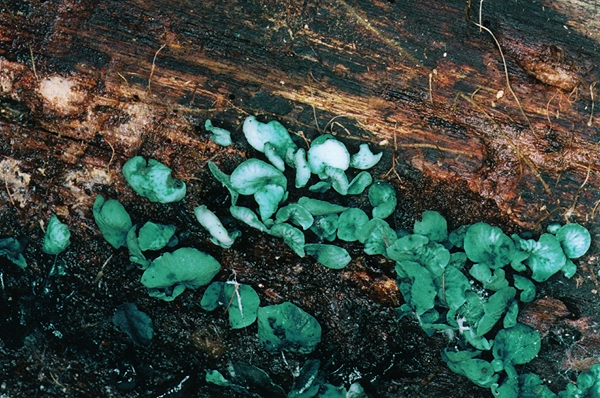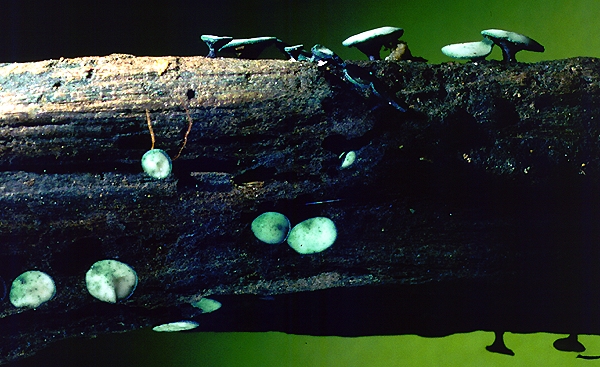
Chlorociboria aeruginascens (Nyl.) Kanouse

Common name: None.
Description: This ascomycete forms small, blue-green cups up to 0.5 cm in diameter on wood. The cups fade with age to become bleached to near-white. Each cup is raised above the wood on a minute, dark blue-green to blackish stem about 3 mm long (often overlooked at first glance). The cup interior is smooth and dry and the margins are even but often very undulate. Usually, there are large numbers of cups produced in a tiny area on the wood surface.
The spores measure 610 × 1.53 µm and are ellipsoidal but usually slightly curved, smooth and colourless under the microscope.
Substratum: Chlorociboria aeruginascens is always found on rotten logs and usually occurs in troops.
Distribution: Known from Queensland, New South Wales, Victoria and Western Australia.

Notes: Wood on which C. aeruginascens is growing is stained green by the mycelium, and observations indicate that the affected wood rots only very slowly as it tends to become extremely hard. Tunbridge Ware (ornaments made from coloured wood, usually including marquetry techniques) is made from the green wood of deciduous wood attacked by this species.

